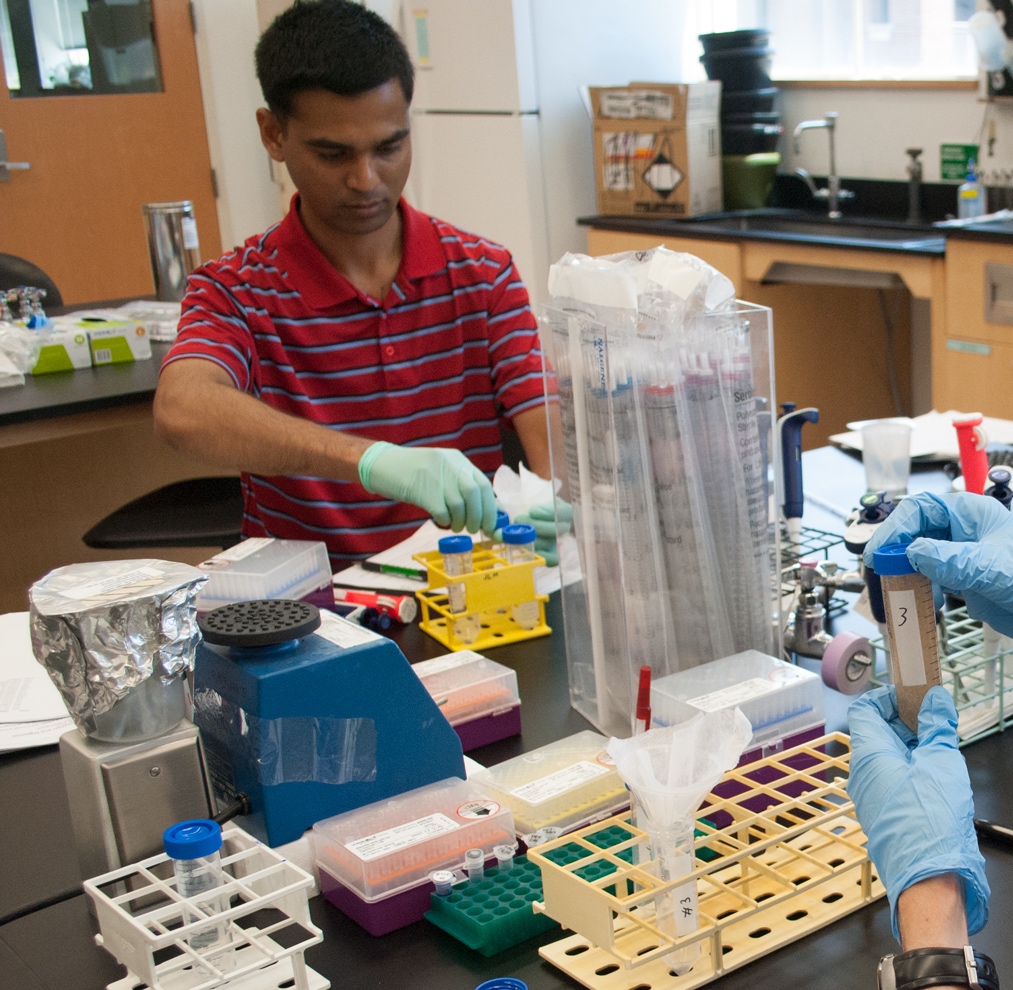FSU workshop on maize genome profiling leads to collaborative study on corn flowering

A genomic mapping technique developed in part at Florida State University has played a crucial role in a new study aimed understanding growth in corn, a major U.S. crop.
The technique, called chromatin sensitivity profiling, has been refined by professor of biological science Hank Bass and colleagues at FSU over the last decade. They used it to help a team of researchers, led by Andrea Eveland, Ph.D., assistant member of the Donald Danforth Plant Science Center in St. Louis, in mapping the maize genome during an early developmental stage critical to plant yield.
The study, “The regulatory landscape of early maize inflorescence development,” was recently published in the journal Genome Biology.
The Eveland Lab, in collaboration with researchers from Florida State, the University of California, Davis, and the University of Illinois Urbana-Champaign, studied the genes expressed during the formation of pollen-bearing tassels and grain-bearing ears.
The inflorescence is the part of the maize plant that grows into male and female flowers, and is commonly known as the tassel at the top of the plant and the ear, respectively. Scientists and the agricultural industry have longstanding interest in such flower development, as these are key to grain production and yield.
While the major factors that control inflorescence development are well known through classical genetics studies, simple modifications generally do not result in higher-yielding maize varieties and plants.
“We need to learn how to adjust the expression precisely in space and time to achieve optimal outputs,” Eveland said. “This study serves as a foundation for doing that.”

Md Shamimuzzaman, a co-author who attended the workshop from the Eveland lab.
The collaboration for this study began at FSU through a workshop helmed by Bass as principal investigator and supported the by National Science Foundation’s Plant Genome Research Program. Bass describes the NSF grant as funding a resource development project for the community of researchers studying maize and other high-yield cereal crops that feed and fuel the world.
Workshop participants learned the Bass Laboratory’s technique to profile chromatin, the DNA and genetic material inside the cell nucleus. Bass’ method extracts cell nuclei and applies a “nuclease” or enzyme, which functions as a probe. That nuclease diffuses into the nucleus and identifies where DNA is accessible or open to modification.
“Chromatin is like a light switch for turning genes on and off,” Bass said. “If the chromatin is ‘open,’ you can access the light switch. But if it’s ‘closed’ you can’t flip the switch.”
Chromatin sensitivity profiling is a foundational first step toward additional research. In this case, the Danforth-led study applied the FSU technique along with others to identify genes that could be regulated in order to ultimately change development of tassels and ears in maize.
FSU’s underlying method and baseline data, Bass said, could also be used for a variety of other incremental improvements in related plants.
“Increasing yield is the obvious trait most people understand as worth improving but climate change means that the ability to grow hardy, high-yielding plants under adverse conditions is also going to be an important goal,” he said.
The Eveland Lab study is the second project from the FSU workshop to reach publication. The first, published in Plant Physiology in May 2020, was in coordination with researchers from North Carolina State University and involved DNA replication using the Arabidopsis plant.
The Bass Laboratory is continuing to refine its technique to serve as a resource for future agricultural and scientific research and projects.

